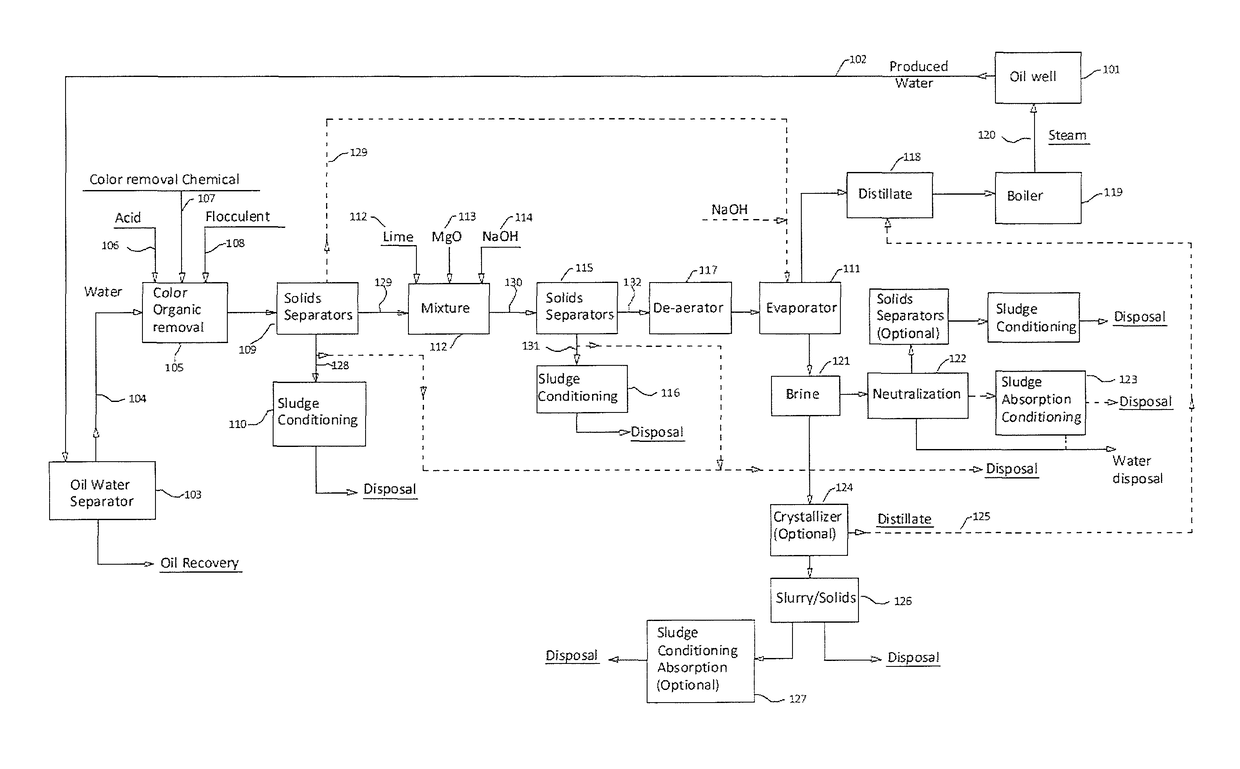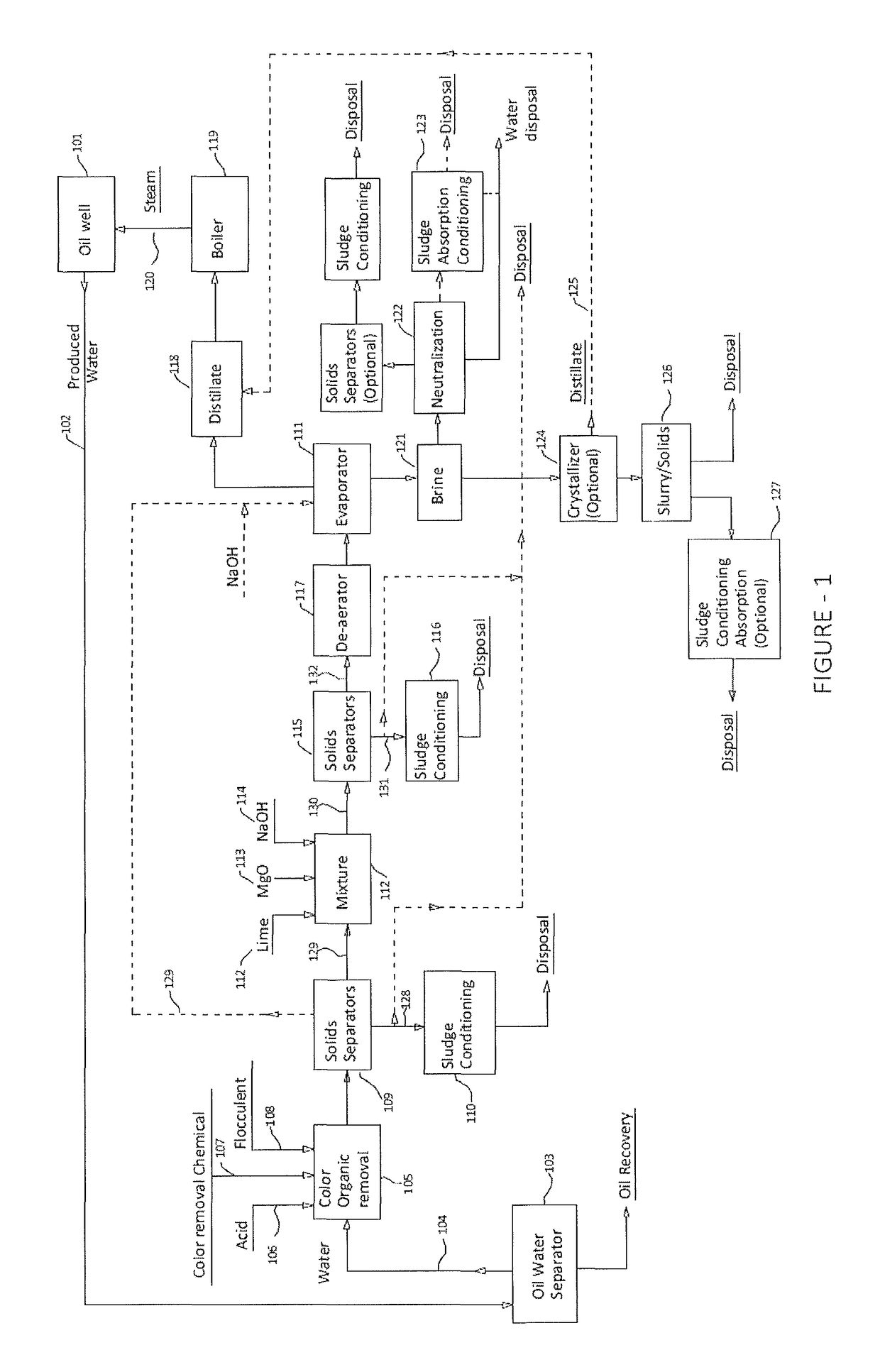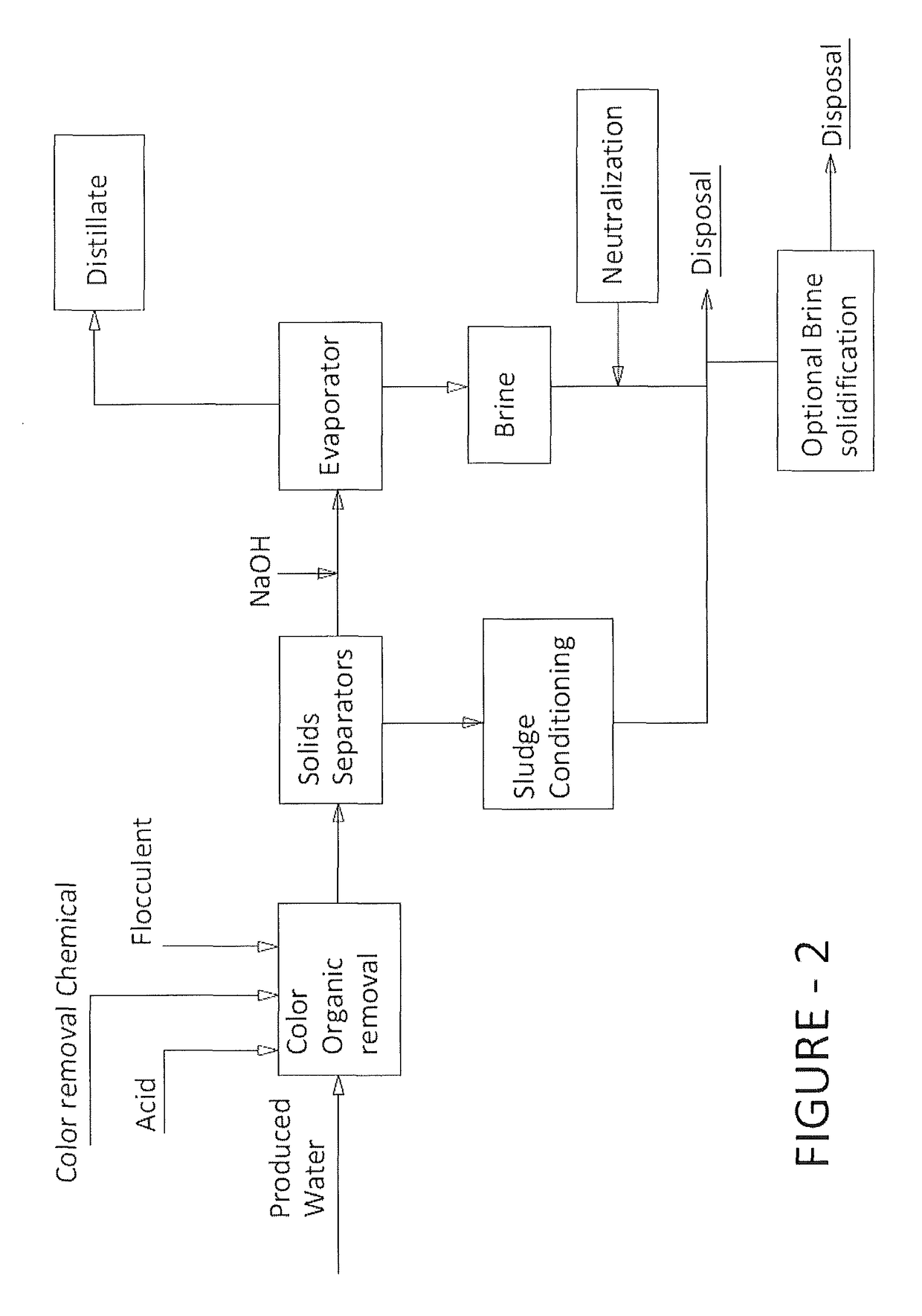Process for purification of produced water
a technology for purifying water and produced water, which is applied in the direction of water/sewage multi-stage treatment, separation process, evaporation, etc., can solve the problems of brine generated through this process not being suitable for deep well injection, affecting the quality of brine, and forming deposits on the surface of tubes. , to achieve the effect of reducing the possibility of downtime, improving reliability and simplifying operations
- Summary
- Abstract
- Description
- Claims
- Application Information
AI Technical Summary
Benefits of technology
Problems solved by technology
Method used
Image
Examples
example 1
[0047]A color removal experiment was performed as per the initial step of the embodiment shown in FIG. 2. To 3000 mL of produced water was added 5.8 mL of a 10% sulfuric acid solution to reduce its pH to 4.2. This was followed by addition of 100 ppm color removal chemicals, Wexfloc-9 (30 mL of 1% Wexfloc-9 solution). A mixing retention time of 15 minute was given and then 0.5 ppm of flocculent (1.5 mL of 0.1% AT-7594 solution) was added to the water. The heavy sludge settled within 5 minutes but treated water was decanted after 30 minute for analysis. The results are shown in Table 1.
[0048]The pH & conductivity were checked by laboratory instruments. The color was analyzed as per APHA Platinum-Cobalt standard method through a HACH DR / 2010 spectrophotometer. The silica was analyzed by silicomolybdate method through a HACH DR / 2010 spectrophotometer. TSS was analyzed through filtration and gravimetric method as per APHA total suspended solids method. TOC was analyzed through TOC Analyz...
example 2
[0051]In another experiment produced water was treated as shown in FIG. 3. The produced water was first treated with a color removal process as described in Example 1. In the decanted treated water, magnesium oxide was added with constant agitation. The water was continuously mixed for 15 minutes, and then its pH was increased to 10 by the addition of lime. Finally the pH was further increased to 11 by the addition of sodium hydroxide. Then 2.5 ppm of coagulant AT 7260 was added to the water and mixed for another 2 minutes. The sludge settled within 15 minutes of retention time in a solids separator, and supernatant treated water was decanted. A portion of treated water was analyzed and results are shown in Table 2.
[0052]The pH & conductivity were checked by laboratory instruments. The color was analyzed as per APHA Platinum-Cobalt standard method through a HACH DR / 2010 spectrophotometer. The silica was analyzed by a silicomolybdate method through a HACH DR / 2010 spectrophotometer. T...
PUM
| Property | Measurement | Unit |
|---|---|---|
| volume | aaaaa | aaaaa |
| pH | aaaaa | aaaaa |
| time | aaaaa | aaaaa |
Abstract
Description
Claims
Application Information
 Login to view more
Login to view more - R&D Engineer
- R&D Manager
- IP Professional
- Industry Leading Data Capabilities
- Powerful AI technology
- Patent DNA Extraction
Browse by: Latest US Patents, China's latest patents, Technical Efficacy Thesaurus, Application Domain, Technology Topic.
© 2024 PatSnap. All rights reserved.Legal|Privacy policy|Modern Slavery Act Transparency Statement|Sitemap



